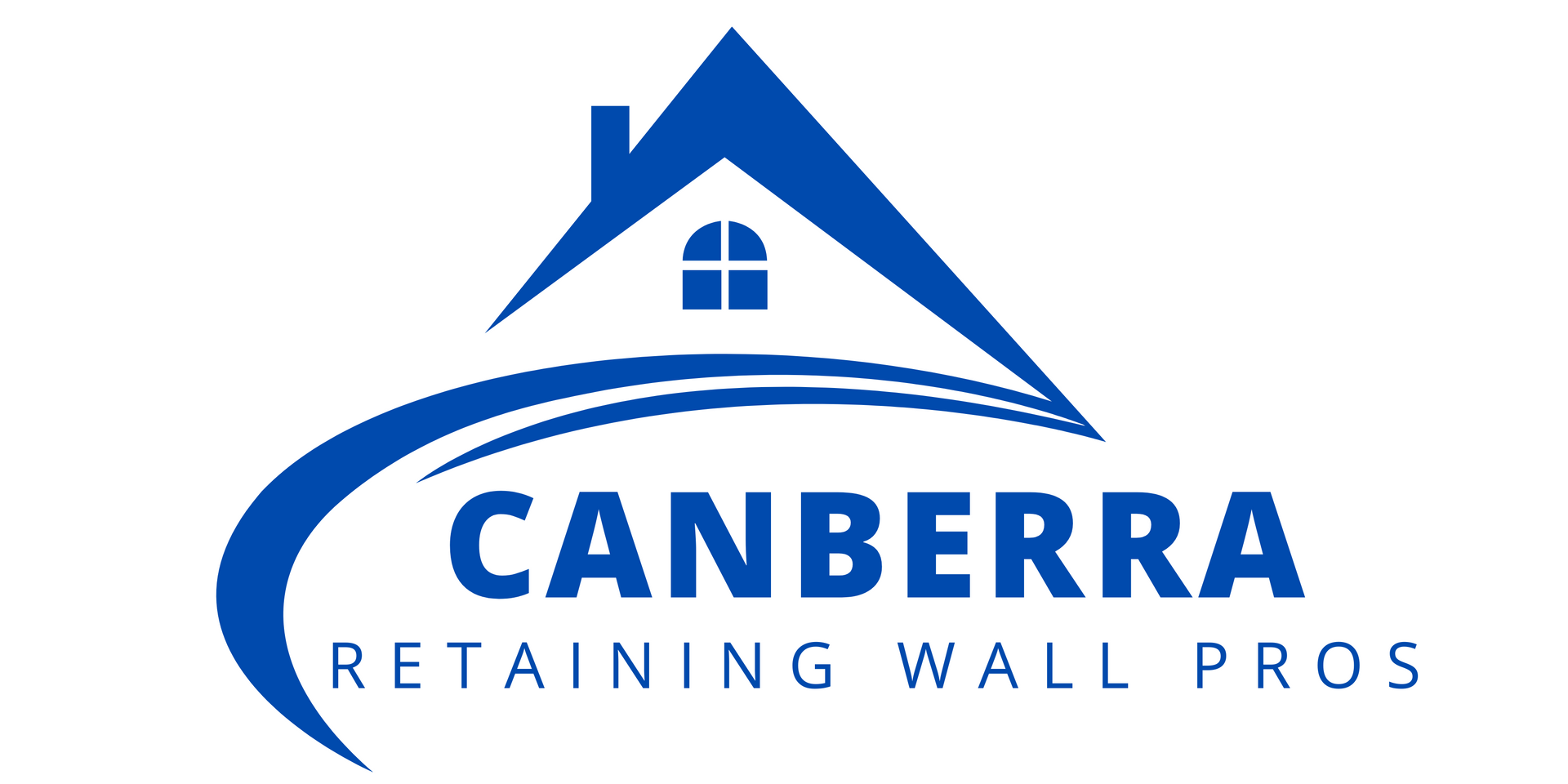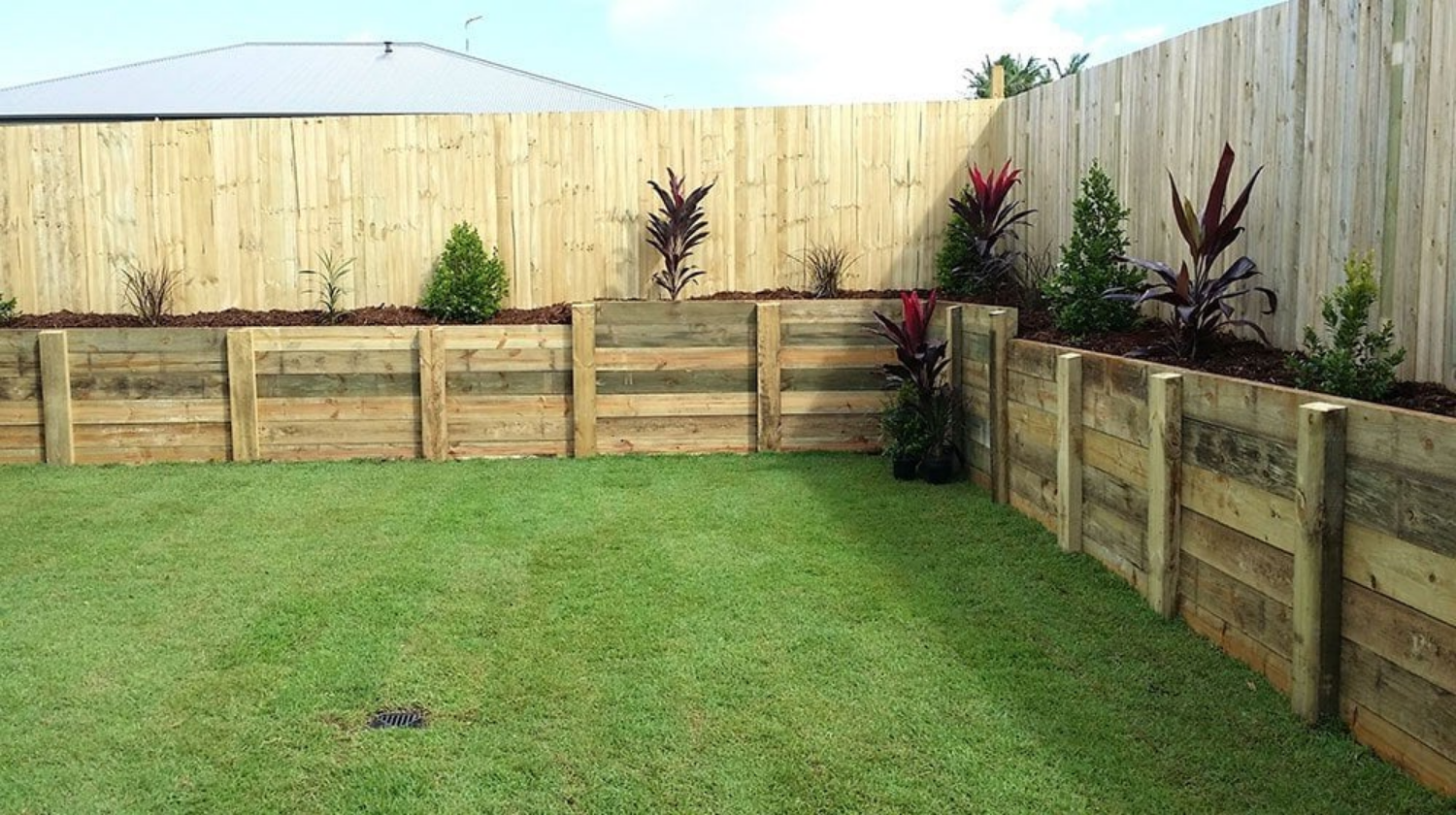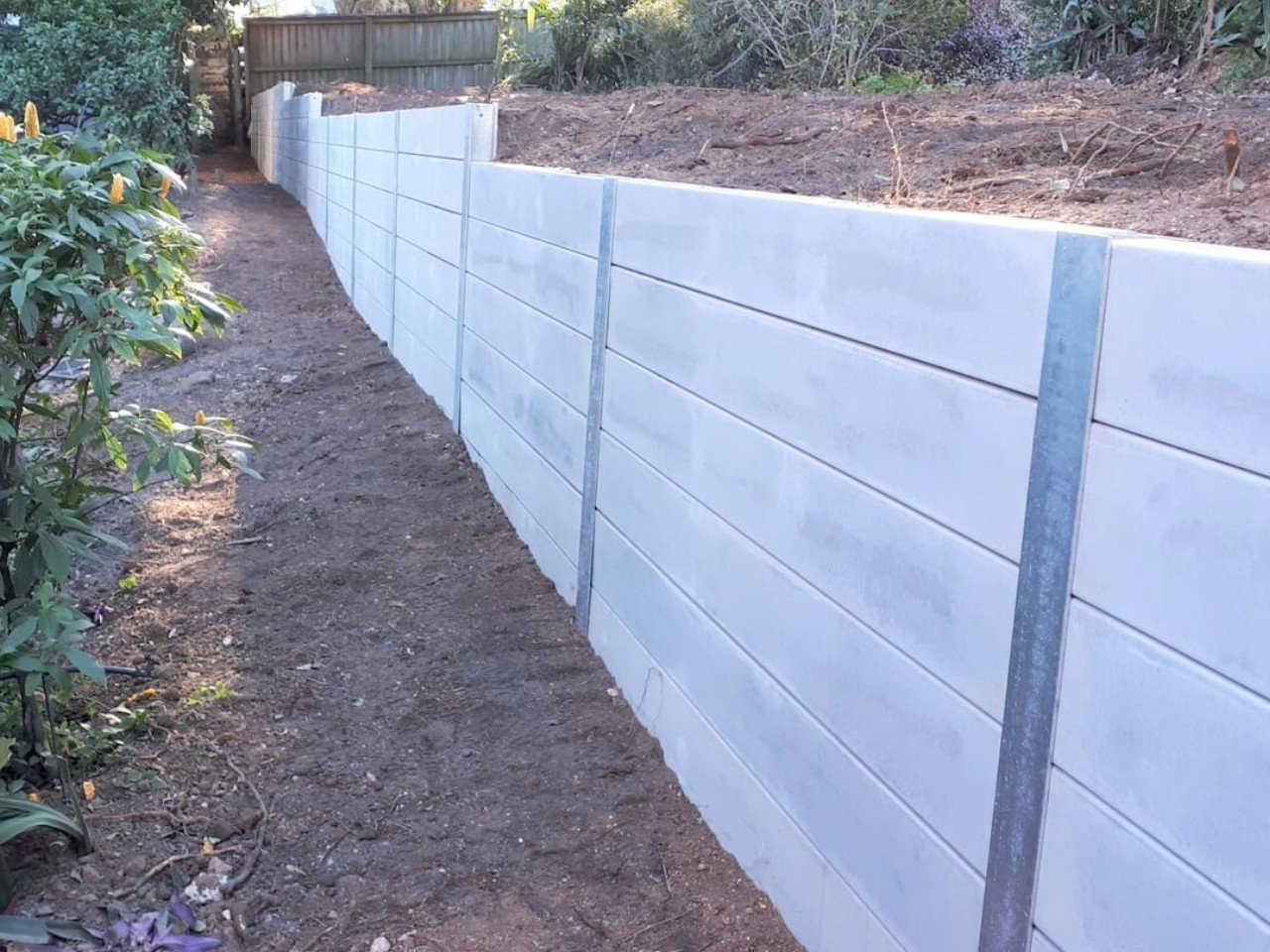Retaining Wall Builders in Theodore, ACT
We specialise in top-quality retaining wall construction services in the rapidly growing suburb of Theodore, which has seen a 12% population increase since 2016 to reach 3,798 residents in 2021. Our company understands the unique challenges of local property development in and around this suburb. Our team of skilled professionals brings years of experience to every project, ensuring durable and attractive solutions for your property.
We offer competitive pricing and exceptional customer service, making us the go-to choice for retaining wall needs in Theodore and across Canberra. With Theodore's median housing density of 1,225 people per square kilometre and its position adjacent to the Tuggeranong Hill Nature Reserve, our expertise is particularly valuable for managing the suburb's sloped terrain. We covers a wide range of materials and designs, allowing us to tailor our services to your specific requirements and landscape.
We understand the unique challenges of the ACT climate and soil conditions. Theodore experiences an average of 629mm of annual rainfall and significant seasonal temperature variations, with summer highs reaching 28°C and winter lows dropping to 0°C, making robust retaining wall solutions essential.
This local knowledge enables us to create retaining walls that not only look great but also stand the test of time. Whether you're looking to enhance your garden, prevent soil erosion, or create more usable space on your property, we have the skills and resources to bring your vision to life.
Understanding Retaining Walls
Retaining walls serve crucial purposes in landscaping and construction. In Theodore, where the terrain varies significantly across its 3.1 square kilometre area, these structures are particularly important. They hold back soil, manage water flow, and create usable space on sloped terrain.
Purpose and Functionality
Retaining walls are structures designed to restrain soil to a slope that it would not naturally keep to. This is especially relevant in Theodore, where the suburb's elevation varies and the presence of Deakin Volcanics formations from the late Silurian age requires careful consideration in construction projects. They prevent downslope movement and provide support for vertical or near-vertical grade changes. These walls are essential for controlling erosion, creating level areas for buildings or gardens, and managing water runoff.
We often use retaining walls to:
- Increase usable land area
- Prevent soil erosion on slopes
- Create terraces for planting
- Manage water drainage
- Support structures on uneven ground
Properly designed retaining walls can transform challenging landscapes into functional spaces while enhancing property aesthetics.
Types of Retaining Walls
Several types of retaining walls exist, each suited to different needs and conditions:
- Gravity walls: Rely on their weight to resist pressure from behind
- Cantilever walls: Use a reinforced concrete stem and base slab
- Sheet piling: Metal or vinyl sheets driven into the ground
- Anchored walls: Use cables or other tie-backs for additional support
- Mechanically stabilised earth (MSE) walls: Incorporate reinforcing strips in the backfill
Materials commonly used include:
- Concrete blocks
- Poured concrete
- Timber
- Natural stone
- Gabion baskets (wire cages filled with rocks)
Each material offers unique benefits in terms of cost, durability, and aesthetic appeal.
Factors Affecting Design and Selection
Selecting the right retaining wall involves considering various factors:
- Theodore's unique soil composition, featuring Deakin Volcanics rhyodacite and quaternary alluvium in lower parts
- The suburb's position bounded by the Monaro Highway and Tharwa Drive
- Local weather patterns, including an average of 106 clear days annually
- Theodore's predominantly residential character, with 36 being the median age of residents
- Wall height and length
- Site drainage conditions
- Aesthetic preferences
- Budget constraints
- Local building regulations
We must assess the soil's bearing capacity and potential for movement. The wall's height influences the design, with taller walls requiring more robust engineering solutions. Proper drainage is crucial to prevent water pressure build-up behind the wall. Climate considerations include freeze-thaw cycles and potential for heavy rainfall. Aesthetically, the wall should complement the surrounding landscape and architecture.
Budget often dictates material choices and construction methods. Structural integrity is paramount. We ensure all designs meet or exceed local building codes and engineering standards to guarantee long-term stability and safety.
Building a retaining wall requires careful planning and execution. In Theodore, where 89% of dwellings are separate houses and the terrain includes significant geological formations, we follow a structured process to ensure your wall is sturdy, functional, and aesthetically pleasing.
Initial Site Assessment
We begin with a thorough site assessment. Given Theodore's location adjacent to the Tuggeranong Hill Nature Reserve and its unique volcanic bedrock, our team examines the soil conditions, drainage patterns, and landscape features. We pay particular attention to the area's characteristic green-modified rhyodacite formations and potential water runoff patterns from the hill reserve. We measure the area and evaluate any existing structures or vegetation.
This step is crucial for determining the wall's design and material requirements. We also check local regulations and building codes to ensure compliance. Our experts assess potential challenges, such as uneven terrain or poor soil stability. We use this information to create a tailored plan for your retaining wall.
Designing Your Retaining Wall
Next, we create a custom design for your retaining wall. Taking into account Theodore's average block size of approximately 800 square metres and the suburb's established streetscape named after civilian war effort contributors, we consider factors like wall height, length, and desired aesthetics. Our team uses advanced software to model the wall and visualise its integration with your landscape.
We discuss material options, such as concrete blocks, natural stone, or timber. Each material has unique properties and visual appeal. We help you choose the best option for your needs and budget. The design phase also includes planning for proper drainage systems and geogrid reinforcement if necessary. These elements are vital for the wall's longevity and stability.
Preparing for Construction
Before building begins, we obtain necessary permits and approvals. We mark utility lines and prepare the site by clearing vegetation and debris.
Our team then excavates the area, ensuring a level base for the wall. We compact the soil and lay a sturdy foundation, typically using crushed stone or concrete. We install a drainage system behind the wall to prevent water buildup. This may include perforated pipes and gravel backfill. Proper drainage is essential for preventing soil erosion and wall failure.
Building the Retaining Wall
Construction starts with laying the first course of materials. We use string lines and levels to ensure precise alignment. Each subsequent course is carefully placed and secured. For block walls, we use high-quality mortar between courses. Natural stone walls require skilled craftsmanship to fit pieces together securely.
We incorporate weep holes at regular intervals to allow water drainage. Geogrid reinforcement is added for taller walls, extending into the soil behind the wall. As we build, we continuously check for level and plumb. Our team pays close attention to detail, ensuring each element is correctly placed for maximum strength and durability.
Materials and Components
We use a variety of high-quality materials and essential components to build sturdy, long-lasting retaining walls in Theodore, ACT. Understanding the suburb's geological profile, which includes various types of Deakin Volcanics from the late Silurian age, helps us select appropriate materials for local conditions. Our expert team carefully selects materials and incorporates key features to ensure optimal performance and durability.
Choosing Quality Materials
We offer a range of materials for retaining wall construction to suit different needs and preferences. Given Theodore's position near the Monaro Highway and exposure to traffic vibration, as well as its elevation changes towards Tuggeranong Hill, concrete blocks are a popular choice, providing strength and versatility. The suburb's mature tree coverage, established since its gazettal in 1975, helps timber retaining walls offer a natural look. These are cost-effective for smaller projects. Natural stone walls create a stunning aesthetic and blend seamlessly with the landscape.
For larger structures, we often use reinforced concrete, which offers exceptional strength and durability. Each material has its unique benefits, and we help clients choose the best option based on factors such as soil conditions, wall height, and design requirements.
Reinforcement and Stability Features
To ensure structural integrity, we incorporate various reinforcement techniques. For block walls, we use geogrid reinforcement, a strong synthetic mesh that anchors the wall to the soil behind it. This helps distribute the load and prevents bulging or collapse. Timber walls benefit from treated posts set deep into the ground and secured with concrete. For concrete walls, we use steel reinforcement bars to enhance strength and prevent cracking. Our team also considers factors like soil pressure and surcharge loads when designing reinforcement systems.
Incorporating Effective Drainage
Proper drainage is crucial for the longevity of retaining walls. With Theodore receiving significant rainfall during storm events and featuring natural water courses that flow towards the Tuggeranong Creek system, we install a layer of gravel backfill behind the wall to facilitate water drainage. This helps prevent water pressure build-up, which can lead to wall failure. The suburb's sloping terrain, particularly evident near the Theodore Primary School and neighbourhood oval, requires careful consideration of drainage patterns.
We also incorporate weep holes at regular intervals along the base of the wall. These small openings allow water to escape, reducing hydrostatic pressure. For taller walls or areas with heavy rainfall, we may install perforated drainage pipes to channel water away from the wall's foundation. By addressing drainage concerns, we minimise the risk of soil erosion and ensure the retaining wall remains stable over time. Our comprehensive approach to drainage protects both the wall structure and the surrounding landscape.
Regulation and Approval
Building retaining walls in Theodore, ACT requires adherence to local regulations and safety standards. As part of the Tuggeranong district and within the Bean federal electorate, we'll explore the approval process and compliance requirements for retaining wall projects.
Navigating Local Regulations
In Theodore, ACT, retaining wall construction is subject to specific local regulations. We are well-versed in these requirements. Walls over 1 metre in height typically need building approval from the ACT Planning and Land Authority. The approval process involves submitting detailed plans and specifications.
We assist our clients in preparing the necessary documentation, including site plans, structural drawings, and soil reports. It's crucial to consider factors such as wall height, materials, and proximity to property boundaries. We ensure all these aspects comply with ACT building codes and zoning regulations.
Ensuring Compliance and Safety
Safety is paramount in retaining wall construction. We prioritise structural integrity in all our projects. Our team works closely with qualified engineers to design walls that meet or exceed safety standards. We conduct thorough site assessments to determine soil conditions and drainage requirements. This helps us create tailored solutions that comply with local regulations and ensure long-term stability.
Our construction methods adhere to Australian Standards for earth-retaining structures. We use high-quality materials and proven techniques to build durable, compliant walls. Regular inspections during construction help us maintain compliance. We keep detailed records of our work, which can be useful for future property transactions or council enquiries.
Maintenance and Upkeep
Proper maintenance is crucial for ensuring the longevity and stability of retaining walls. Regular inspections and timely repairs can prevent minor issues from becoming major problems.
Routine Inspection and Maintenance
We recommend conducting visual inspections of your retaining wall at least twice a year. Look for signs of cracking, bulging, or leaning. Check the drainage system to ensure it's functioning correctly. Clear away any debris or vegetation that may be growing in or around the wall. For walls over 1 metre high, consider having a professional assessment annually. We can provide this service, offering expert insight into your wall's condition.
Keep an eye on soil moisture levels, especially during rainy seasons. Excess water can lead to increased pressure on the wall. Ensure gutters and downspouts direct water away from the retaining wall area.
Addressing Wear and Tear
Over time, retaining walls may show signs of wear. Cracks or gaps in mortar joints should be repaired promptly to prevent water ingress. We can repoint masonry walls or replace damaged blocks in segmental walls. Erosion control is vital for maintaining wall stability. If you notice soil washing away from behind the wall, additional drainage measures may be necessary.
We can install or upgrade drainage systems to protect your wall's integrity. In areas with clay soils or significant temperature fluctuations, walls may shift slightly. Monitor any movement closely. If displacement exceeds 1-2 cm, professional intervention is advised. Our team can assess the situation and recommend appropriate reinforcement or repair strategies.
Project Showcase
We take pride in our high-quality craftsmanship and custom designs. Our portfolio includes numerous projects along Lawrence Wackett Drive, named after the father of the Australian aircraft industry, and throughout Theodore's family-oriented neighbourhoods, where approximately 70% of households are families.
Featured Retaining Wall Projects
We've completed numerous retaining wall projects in Theodore, each tailored to the unique needs of our clients. Our team recently constructed a sleek, modern gabion wall for a residential property, incorporating local stone to blend seamlessly with the natural surroundings. Another standout project involved a tiered retaining wall system for a sloping backyard, creating usable garden spaces and enhancing the property's aesthetic appeal. We also built a sturdy concrete block wall for a commercial client, designed to withstand heavy loads and provide long-lasting support.
Client Testimonials and Reviews
Our commitment to quality and customer satisfaction is reflected in the positive feedback we receive. Mrs. Thompson, a resident of Theodore since its early development in 1986, praised our work: "The team at Canberra Retaining Wall Pros transformed our problematic slope into a beautiful, functional space. Their attention to detail was impressive."
A local business owner near the Theodore shopping precinct shared: "We needed a robust retaining wall for our storage yard. The solution provided by Canberra Retaining Wall Pros exceeded our expectations in both form and function."
These testimonials highlight our expertise in creating custom retaining wall solutions that meet our clients' specific needs and enhance their properties.




